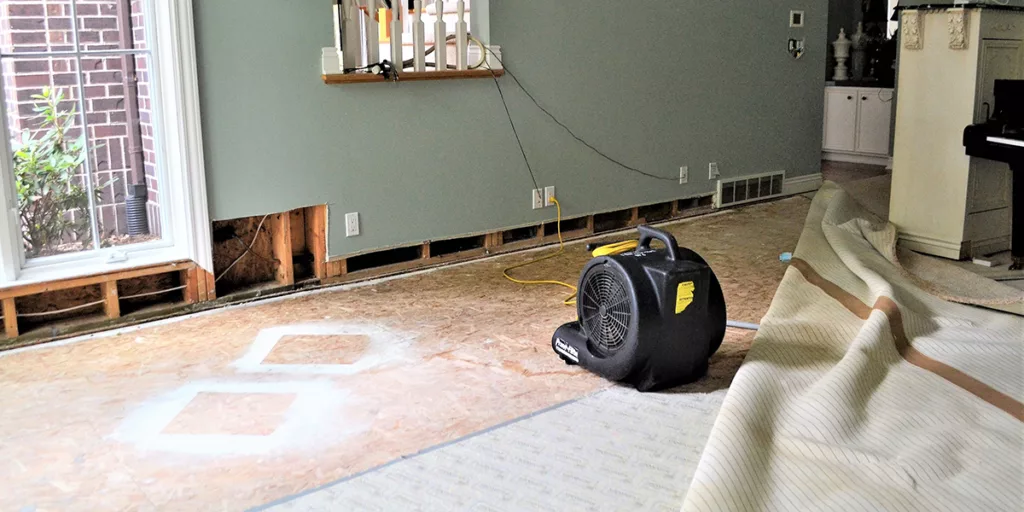Tackling Water Damage in Carpets
Carpets can absorb water like a sponge, leading to potential issues like mold and bad odors if not handled correctly. Here’s how to manage water-damaged carpets.
Essential Cleaning Tools and Products
- Carpet Extractor or Wet/Dry Vacuum: For water extraction. Hoover CleanSlate Plus Carpet & Upholstery Spot Cleaner
- Dehumidifiers: To dry out both carpet and underlayment. 4500 Sq.Ft Most Efficient Energy Star 2024 Dehumidifier
- Carpet Cleaning Solutions: Like RMR-86 Pro Instant Mold Stain & Mildew Stain Remover
- Mold Inhibitors: Use after drying to prevent mold. RMR-86 Instant Mold and Mildew Stain Remover Spray

Steps to Restore Carpets
- Water Removal: Use a vacuum to extract water. Remove any wet padding if possible.
- Drying: Employ fans and dehumidifiers for thorough drying. Ensure both the carpet and the floor beneath are dry.
- Cleaning: Once dry, clean with a carpet cleaner or rent a professional-grade machine. Use appropriate cleaners for your carpet type.
- Odor and Mold Prevention: Apply mold inhibitors and odor neutralizers.
- Re-evaluation: Check for any remaining issues. If the carpet or pad is too damaged, consider replacement.
FAQs:
Q: How Long Does It Take for Carpet to Dry After Water Damage?
A: With fans and dehumidifiers, expect 24-48 hours, but it can vary.
Q: Should I Remove the Carpet Padding?
A: Yes, if it’s saturated and damaged, to prevent mold growth.
Q: Can I Save My Water-Damaged Carpet?
A: Often, yes, if you act fast and clean/dry it properly. However, contaminated water might necessitate replacement.
Q: What If There’s Mold in My Carpet?
A: Immediate action is required; use mold-killing products or consider professional carpet cleaning or replacement.
